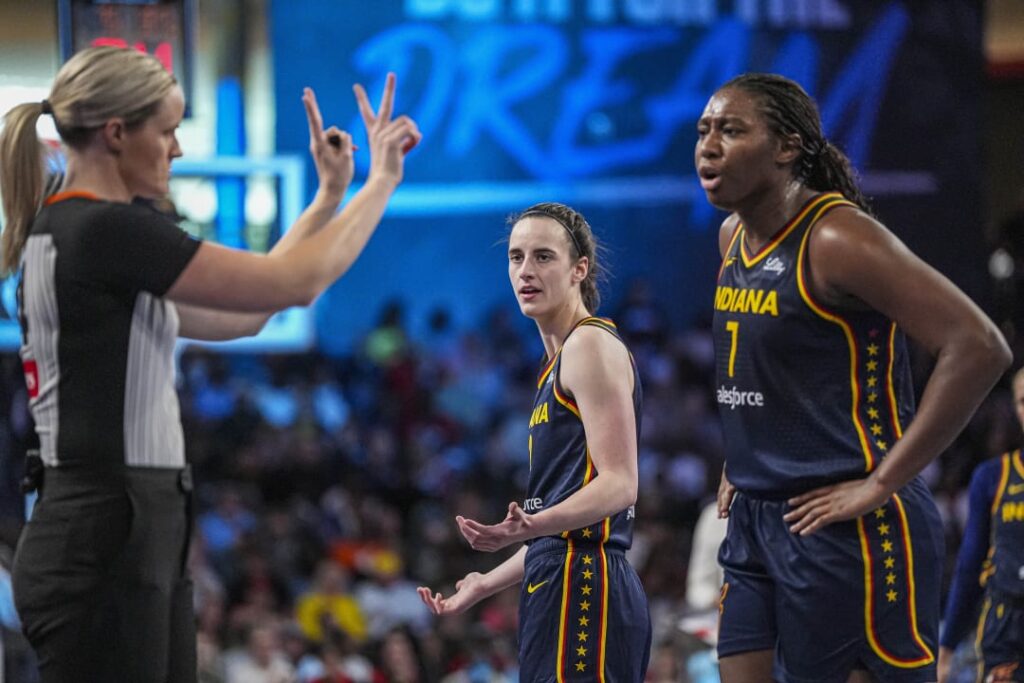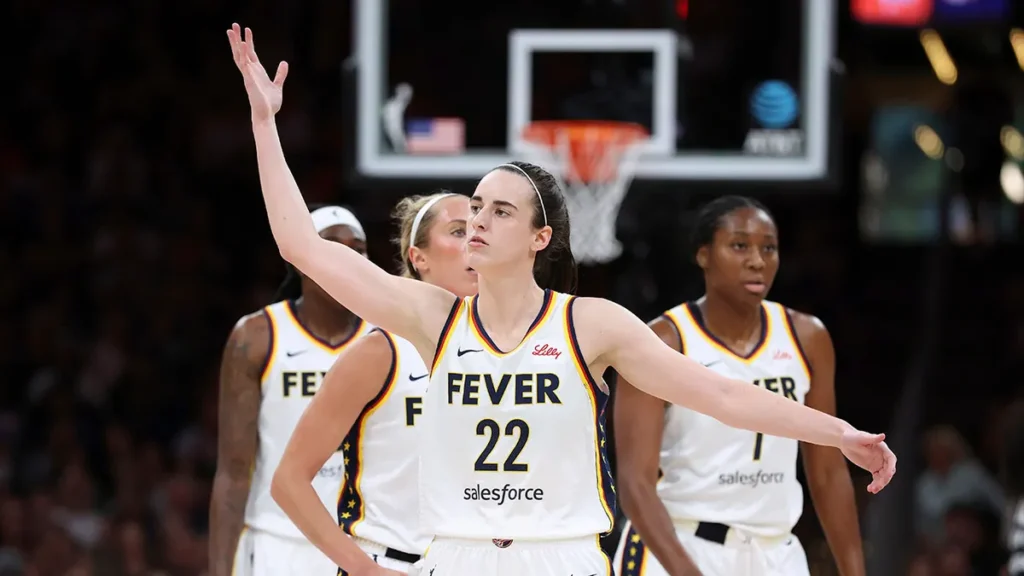Injuries force Caitlin Clark and others to miss the WNBA All-Star Game, sparking renewed player demands for a less grueling schedule and more recovery time.
All-Stars Are Dropping—and So Is Player Patience
The WNBA All-Star weekend is usually all vibes, all smiles, all-star power. But this year? The roster shakeups hit like a hard screen.
On Friday, the league confirmed that Caitlin Clark—yes, the Caitlin Clark, All-Star team captain and the face of Indiana Fever—would sit out the All-Star Game in her own backyard due to a groin injury. Ouch, on multiple levels.
And she’s not the only one sidelined. Atlanta’s Rhyne Howard and Phoenix’s Satou Sabally are also out, highlighting a growing issue that WNBA players say can’t be ignored anymore: the grind is real—and it’s costing them.

“We Need Breathing Room,” Say Players
“We play a heavy amount of minutes,” said Sabrina Ionescu of the New York Liberty. “Lengthening the season and not having four games a week with 9- or 10-player rosters… that’s something that could help.”
Basically, the W is playing a tough game off the court, too—balancing growth with player health. With expansion already underway (hello, Golden State Valkyries) and two more teams on deck next season, the schedule jumped from 40 to 44 games this year.
Now imagine that with cross-country travel, high-level intensity, and roster sizes that wouldn’t even fill out a group text. That’s what these athletes are juggling.
Las Vegas Aces guard Jackie Young, fresh off a hip injury, didn’t mince words:
“So many games back-to-back… it’s important that we’re able to get the amount of rest that we need.”

Union Talks Heating Up as 2026 CBA Looms
This isn’t just locker room chatter—it’s headed to the negotiation table. Players and league officials sat down Thursday to talk shop as they begin early conversations around the next collective bargaining agreement (CBA), set to take effect in 2026.
And while schedule spacing is a big ask, it’s far from the only one.
Let’s not forget: many WNBA players spend their so-called offseasons playing overseas just to pad their incomes. That double-duty reality only adds to the fatigue and risk.
Kayla McBride’s Beach Trip Got Benched
For Minnesota Lynx guard Kayla McBride, the break was supposed to be just that—a real break. She had a Turks and Caicos weekend lined up after playing 11 games in 20 days.
Instead? Her phone buzzed at the worst possible time.
“(WNBA Commissioner) Cathy [Engelbert] texts me, ‘Hey, you have a second to talk?’” McBride said with a laugh. “I had to cancel my flight… I was sad, but then I was happy.”
Sad about the missed beach. Happy to be honored as an All-Star. But still, it sums up the theme: WNBA players are constantly on-call, and the exhaustion is starting to show.
What Needs to Change—and Why It Matters
The solution isn’t just fewer games—it’s smarter scheduling, deeper rosters, and maybe most importantly, fairer pay that doesn’t force elite athletes into year-round grind mode.
Fans want the best out of stars like Clark, Ionescu, and Young—but they can’t do it if they’re running on empty.
Here’s what could help:
- More recovery days between games
- Expanded rosters to lighten workloads
- Offseason support to reduce overseas dependency
- Better player input in scheduling decisions
If the league wants to keep rising (and it is), it’s time to listen to the players who are literally putting their bodies on the line every night.
Related News: